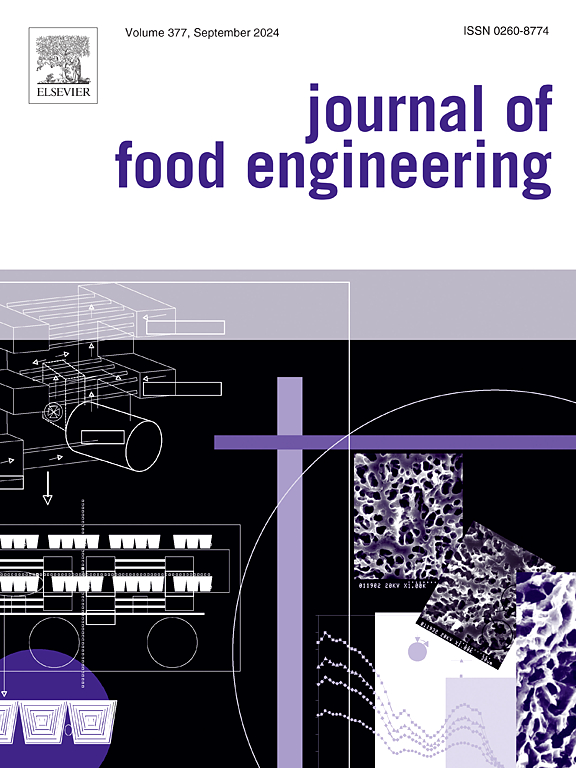Development of tea polysaccharides-xanthan gum complex oleogel: Characterization and curcumin delivery
IF 5.3
2区 农林科学
Q1 ENGINEERING, CHEMICAL
引用次数: 0
Abstract
Oleogels have significant potential for delivering lipid-soluble bioactive compounds. We here prepared a tea polysaccharide conjugate (TPC)-Xanthan gum (XG) complex using the emulsion template method and investigated its curcumin (Cur) loading capacity and in vitro digestion mechanisms. Results unveiled that XG interacts non-covalently with TPC, primarily through electrostatic interactions and hydrogen bonding, enhancing emulsion template formation and stabilization. In addition, XG improved the oleogel's oil-binding capacity, gel strength, hardness, apparent viscosity, and other gel properties. Meanwhile, the complex oleogel-loaded Cur exhibited a high Cur encapsulation efficiency (>80 %), increased antioxidant activity, an augmented free fatty acid release rate, and improved Cur bioaccessibility (>50 %) and digestive stability. These findings provide a novel approach to designing oleogels for the effective delivery of lipid-soluble bioactive compounds.
茶多糖-黄原胶复合油凝胶的研制:表征及姜黄素的传递
油凝胶在输送脂溶性生物活性化合物方面具有重要的潜力。本文采用乳液模板法制备了茶多糖缀合物(TPC)-黄原胶(XG)配合物,并对其姜黄素(Cur)的负载能力和体外消化机制进行了研究。结果表明,XG与TPC的非共价相互作用主要通过静电相互作用和氢键作用,增强了乳液模板的形成和稳定性。此外,XG还提高了油凝胶的粘油能力、凝胶强度、硬度、表观粘度和其他凝胶性能。同时,复合油凝胶负载的Cur具有较高的包封率(> 80%),增强抗氧化活性,增加游离脂肪酸释放率,改善Cur的生物可及性(> 50%)和消化稳定性。这些发现为设计有效递送脂溶性生物活性化合物的油凝胶提供了一种新的方法。
本文章由计算机程序翻译,如有差异,请以英文原文为准。
求助全文
约1分钟内获得全文
求助全文
来源期刊

Journal of Food Engineering
工程技术-工程:化工
CiteScore
11.80
自引率
5.50%
发文量
275
审稿时长
24 days
期刊介绍:
The journal publishes original research and review papers on any subject at the interface between food and engineering, particularly those of relevance to industry, including:
Engineering properties of foods, food physics and physical chemistry; processing, measurement, control, packaging, storage and distribution; engineering aspects of the design and production of novel foods and of food service and catering; design and operation of food processes, plant and equipment; economics of food engineering, including the economics of alternative processes.
Accounts of food engineering achievements are of particular value.
 求助内容:
求助内容: 应助结果提醒方式:
应助结果提醒方式:


